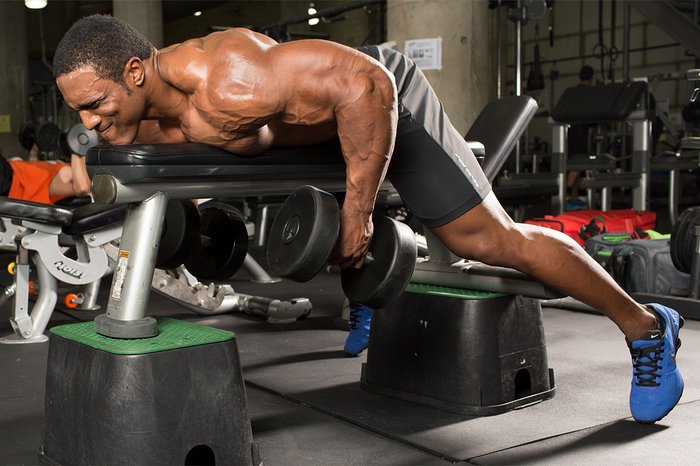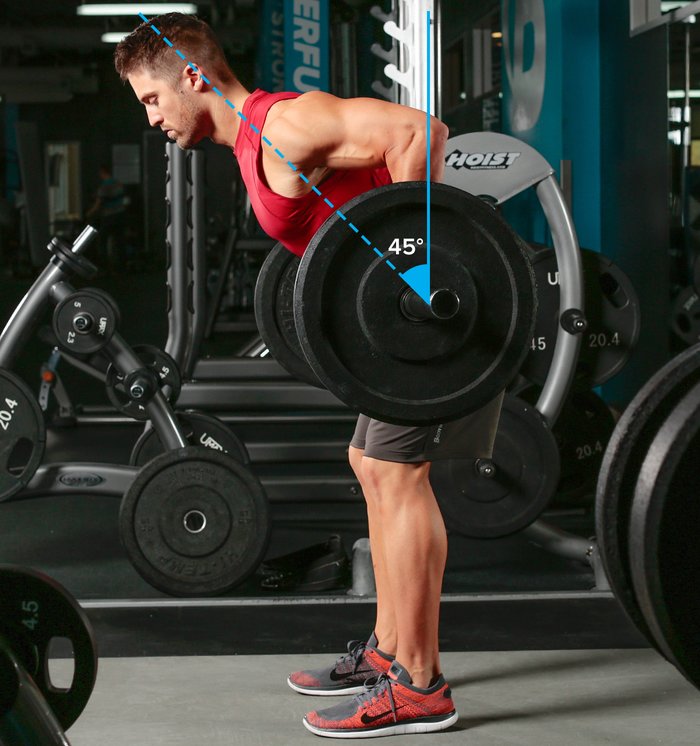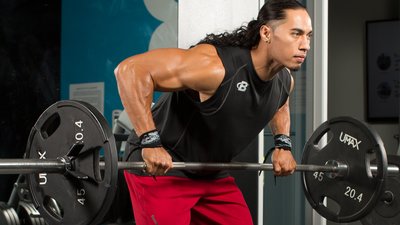I'm a lucky guy. Earlier in my training career, I had the luxury of seeking my strength goals in private sanctuaries, instead of having to fight for space at the commercial rack. OK, I did most of those workouts in my garage, but I also had access to some very nice private gyms.
Due to life events (i.e., children and work), I've been forced to train at an LA Fitness gym in Tucson, Arizona, for the past 10 years. In that time, I've seen it snow in Tucson more often than I've seen anyone at that gym perform "the fourth powerlift," the bent-over barbell row. That's a shame because these classic rows can pave the way to major PRs.
The gateway to gains
It was Larry Pacifico, winner of nine straight IPF World Powerlifting Championships from 1971-1979, who added the bent-over row to the triad of bench press, deadlift, and squat to form his quartet of foundational powerlifting exercises. This version of the row was popular up through the 1990s, about the time when powerlifter Josh Bryant performed it as part of his training with Gary Frank, the first powerlifter to total 2,500; 2,600; 2,700; and 2,800 pounds.
Bryant's weekly training with Frank included one bench session, one squat-deadlift session, and one all-upper back workout based on the bent-over row.
Bryant has since popularized the seal row as a stricter version of the bent-over row, and one that minimizes lower-back stress. Given that Bryant has done more 600-pound raw bench presses than anyone competing in the game today, it might be worth checking out his seal row, too.

One of my early mentors in California was IPF Hall of Famer David Shaw. Shaw's goal was to always be able to do 5 perfect bent-over row reps using 50 percent of his deadlift max. Shaw said he pulled what was at the time a world-record 854-pound deadlift because of the confidence he gained from rowing 465-pound sets of 5 reps.
When I look over my own training history, I can easily draw a straight line between my bent-over row sets and my biggest lifts. At my strongest, I totaled more than 2,000 pounds at the National Powerlifting Championships. At the same time, I was bent-over rowing for heavy sets of 5 reps with 405 pounds using a belt and straps, and doing it at the end of my squat workout.
When my deadlift pushed into the mid-700s, my squat exceeded 800, and I finally benched over 530. I attribute these feats to consistently doing heavy bent-over rows. My gains in upper-back strength created a bigger "pad" to squat from, a thicker torso to make my bench stroke shorter, and the static power in my upper body to lock out the biggest deadlifts possible.
The only time I suffered an upper-back injury (an aggravated left scapula while doing front-grip deadlifts) was when I had stopped bent-over rowing for a few months. Performed consistently, this "reverse of the bench press" will keep your upper body healthy and balanced.
Integrating bent-overs into your routine
When you're doing bent-over rows for powerlifting gains, start by warming up with sets of 5 reps, then finish with a top set. Once the bar leaves the ground, don't let the plates touch the ground until the set is over.
I prefer to cycle my bent-over rows. I do them heavy and for lower reps leading into a contest. In the off season, I'll lighten the load and do them by touching the plates on the floor between reps, squeezing the weight back up with no momentum—just pure muscle. You can also vary your grip and the bar you use, including using a multi-grip bar so you can use a neutral grip.
I'm not against machines or any other tool that can get your stronger. In 2007 I won first place at CT Fletcher's World Legion of Power contest by doing seven 45-pound plates on an Icarian chest-supported row. The row was easy, and I would have gone heavier, but there was no more room on the bar. How did I do that lift at age 39? I had spent the previous 25 years doing bent-over rows, that's how!
Technique tips
Use the same grip for your rows as you do for your bench press. I position my hands so my pinky is just inside the outer edge of the knurling. I prefer an overhand grip and wear straps when I get over 315 pounds. I do these rows to build a bigger, stronger upper body, not test my grip. I also wear a belt so that I can push my stomach against it while I maintain tension in my lower back.
To start, push out against your belt and, with a slight bend in your knees, squeeze the weight off the floor. Maintain the bend in your knees for the entire set while holding your back at a strict 45-degree angle. Pull the weight up into your upper abs or lower pecs, whichever feels natural to you.

Return the bar to the hang, stretch your shoulders, then pull up the next rep. In my world, a little body English is acceptable. The truly strong realize that true muscle isolation is neither possible nor desirable.
Programming rows into a workout routine
Sometimes I'll do bent-over rows twice in the same week, maybe after a heavy pressing workout, when I'm trying to build a thicker back and get some traction on my rotator cuff after all that press work. In the off-season, when I'm pausing the plates on the floor between reps, I concentrate on squeezing my scapulae and pulling the bar a bit higher into my body.
Start with a lower-body exercise such as squat or deadlift, one of which I emphasize every week. When you deadlift heavy, lighten up on your bent-over row. Conversely, when you deadlift lighter, row heavier.
Add the fourth powerlift to your next workout
I've always been a strength athlete with little concern for aesthetics, but I do notice that my traps are the biggest when I am bent-over rowing. And big traps can come in handy when I'm at LA Fitness and want to shield my ears from all the horrible training advice I hear.
If you work out at a commercial gym, you've probably noticed that there are usually more machines to train back muscles than any other body part. Hammer Strength alone must make a dozen lever-armed devices designed to turn normal backs into barn-door-sized fortifications between butt and neck.
But, if a big back is what you're after, add these bent-over barbell rows to your routine. It may not be the sexiest lift in the world—you can't load them up and dazzle the crowd like you can the other powerlifting mainstays—but if you're looking for something practical and beautifully brutal, get rowing!



